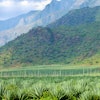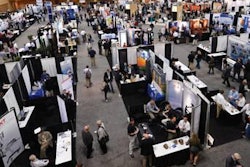Rabobank’s Food and Agribusiness Research and Advisory North American Agribusiness Review is now available. It provides a timely overview of many sectors across North America, including corn, soy and feed. Other sectors covered include beef, dairy, pork, poultry and wheat.
Good growing conditions for corn
As the 2014 crop year progresses, Rabobank reports growing conditions have improved. Planting was at a normal pace, while emergence was more rapid compared with the past five years.
Moisture conditions also have improved, with good rains and cool temperatures giving the crop a boost before critical pollination weeks in July.
According to the report, the U.S. Department of Agriculture (USDA) is projecting a 50 percent growth in ending stocks of 580 million bushels, but most of the increase will rely on an assumed record national yield of 165.3 bushels per acre in 2014. However, the market is skeptical of such high yield expectations before the crop has pollinated.
Tight U.S. crops, global abundance of soy
U.S. soybeans are shaping up to be one of the tightest stocks years on record, the report finds. U.S. soybean exports are at a record high.
The USDA’s import forecast of 90 million bushels of U.S. soybeans is going to be difficult to reach, Rabobank says; through April, the U.S. has imported only 30.5 million bushels of soybeans.
U.S. soybean meal exports also are running at a record pace, which is driven by strong domestic and export demand for U.S. soybean meal.
China’s block on DDG imports cause prices to fall
Limited access to the Chinese market has caused dried distillers grain (DDG) prices to plummet in the second quarter, according to the report. The Chinese government’s decision to block imports of corn products containing the gene MIR162 is driving DDG prices lower.
The lower DDG prices are supporting feeder cattle prices, which is expected to continue throughout the summer.









